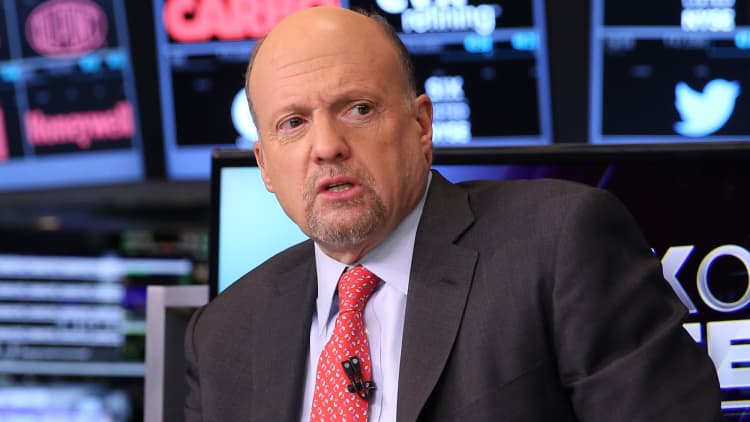
April's surprise drop in unemployment to a 10-year low and strong hiring eases some of the worst fears that the economy hit a rut.
It also means the Federal Reserve is on track to raise interest rates at its June meeting.
There were 211,000 jobs added in April, and the unemployment rate fell to 4.4 percent. Economists had expected 185,000 jobs after March's initial report of 98,000. Even more impressive, the U-6 unemployment rate fell by a surprise three-tenths of a point to 8.6 percent. That measure is viewed as a more accurate reflection of the labor
The government also revised March payrolls even lower, to 79,000 and upped February payrolls to 232,000 from 219,000.
"Just as February strength was weather-related, March weakness was weather-related, and the solid April number was a return to normal," said Ward McCarthy, chief financial economist at Jefferies.
"Q1 has tended to be the weak quarter, not only this cycle but going tack to 1990," said McCarthy. He said the economy should pick up to a pace of 2.5 percent growth in coming quarters, just as it did last year. So far, some economists see the second quarter growing at 3 percent or better.
"How does this figure for the Fed? I think it just keeps them on track which seems to be their preferred 2017 timetable with rate hikes in June and September," said McCarthy.
The Fed earlier this week described the soft growth in the first quarter of just 0.7 percent as transitory and the market had been waiting for the April jobs report to support that view. However, while some economists say the report signaled a rebound, the bond market wasn't fully convinced.
Treasury yields initially rose on the report, but later eased back. The , which most reflects the actions of the Fed, edged up to 1.34
Stocks had a muted reaction, with futures initially moving higher but the market opened mixed.
"This doesn't do enough to dispel that the weakness will be transitory. The revisions pretty much cancel themselves out," said Aaron Kohli, rate strategist at BMO. But Kohli said the wage gains were disappointing. He noted that the average hourly wage increases were up just 2.5 percent year over year, and the prior report of 2.7 percent was revised down to a pace of 2.6 percent.
Kohli also said the one-tenth decline in the participation rate to 62.9 percent was a concern. That reflects a drop in the people actively involved in the workforce.
A "4.4 percent unemployment rate, that's great, but with a downtick in participation, that underscores how hard it is to re-engage the people we lost," said Diane Swonk, CEO of DS Economics. "Unfortunately, this is what full employment looks like in an economy that has a shadow of a Great Recession."
But overall, economists say the report does point to the weak first quarter as being transitory. "We think it's a pretty solid report. We got the rebound in all the places we thought we'd get them. On the employment side, things look fine," said Michael Gapen, chief U.S. economist at Barclays. "Wage growth is still modest. That's kind of the weak spot in the report in the eyes of many." But he said income growth is still solid and should improve.
The biggest area where the economy added jobs was leisure and hospitality, with a 55,000 increase. Health care was up to 20,000, below the average monthly gain of 32,000 in 2016. Mining, which reflects energy drilling, rose by 9,000. Professional and business services trended up with 39,000.
"It says the economy is still doing just fine, and it's standing in the place we thought it would be. The consumer is still there. The consumer is willing to spend on experience," said Swonk, noting that while car sales have softened the pickup in leisure workers indicates spending on vacations and at restaurants.
Swonk said just 6,000 retail jobs were added, reflecting the continued impact of restructuring in that industry as physical stores close and shoppers spend more online. "The changes in the economy is causing pain for retailers. It's causing restructuring. It's
The continued strength in business and professional hiring shows the job market should be good for college graduates, Swonk said.


